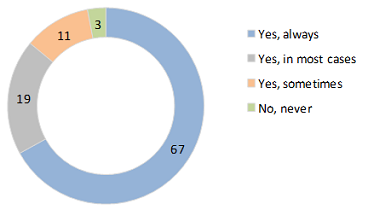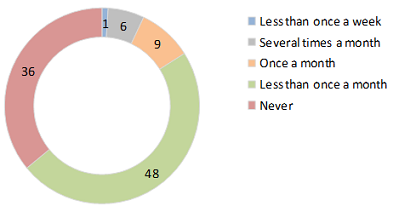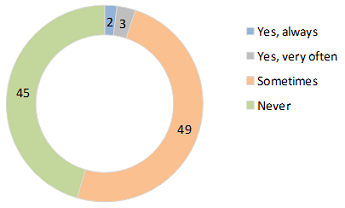Everything in the world is relative. High-class and luxury cars seem to be more shiny, newer and more expensive in Moldova than in USA. Simply because in our small country no matter where there is such a car, in most cases, only a few meters away, you can find a very used "foreign car" from the year '98 - Lada, Moskvich or another "antique" model, such as Zaporozhets, next to which all new cars look so much better and have the comparative advantage.
It is difficult to answer, whether cars for people in our country switched from being a luxury to representing a "mean of transport", but probably we are slowly approaching it. How many of our citizens drive cars, how well they drive them, and what happens to them as a result of driving- all that Magenta Consulting has decided to find out in a study on a sample of 1289 respondents, from the urban area.
Does the car make a person happier? Probably the answer to this question depends on several factors - how often the car must be repaired, the gas price, and of course on whether the car belongs to the person or not. The study showed that the level of happiness amongst those who drive is slightly higher - 5.9 points out of 7, in comparison with 5.7 points amongst those who do not drive. In total, 33% of urban residents over the age of 16 drive a car. As it was expected, amongst women, 14% of them are driving a car, and amongst men, more than half of them posses the driving skills - 56%.
How much do our citizens abide by the law when driving? Recently, the fines for driving without a seatbelt were increased, and as a result the owners of private cars are indeed fastening their seatbelts more often. Public transport drivers however, sometimes having to drive the whole day and based on their principle of not using this measure of precaution, began to come to work with safety pins. They pull the seatbelt to the limit, fix it with a pin and throw it over the shoulder. As they say: both the wolves are satisfied and fed, and the sheep safe. Nonetheless unfortunately, such a seat belt will very unlikely save their lives. It should still be noted that the majority of drivers abide by the rules of safe driving - 67% always fasten the seatbelt, and 19% - do so in most cases. From this point of view, women stick to the rules much more than men. Amongst women, the proportion of those who always wear a seatbelt when driving is 15 points higher than amongst men. How so? Could it be that women drive more carefully, or do they feel less confident as drivers? Most probably - both.
Fig. 1: Tendency of drivers to wear seat belts, N = 428%

However, rules are considered rules so that they are broken, but those who break the rules are punished. In the same order of ideas, 55% of drivers are causing infringements of the traffic rules. Therefore, the percentage of those who abide to the regulations is 45%, which should be equal to the proportion of those who are not stopped by the traffic police; however, this is not the case. The road police did not stop 36% of drivers, which is 9 percentage points less of those who did not violate the rules. Thus, either some drivers are not as familiar with the traffic rules as they think they are, or it might be that in some cases the traffic police stop those who were following the rules. Regardless if the driver has broken the rules or not, being stopped by the police is pretty fastidious and it does not please anybody. Consequently, drivers try to avoid it by all means. More often behind the windshield one can find a small device, which notifies the driver when approaching a radar. In addition, on intercity routes flashing headlights of the car, warns other drivers that not far away, hidden behind the hills somewhat near, there is a black and white car with flashing lights waiting.
Fig. 2: Frequency of the traffic police stopping the drivers, N = 425%

Fig. 3: Violation of traffic rules, N = 419%

Without doubt, the traffic police can always find a reason to stop a car; nonetheless, it is better not to break the rules. Why is it necessary to first of all, know the regulations? Many drivers take their first lessons from their friends, parents or acquaintances. Only after that, they have to pass the exams in driving school. The benefit is that you can save money on classes, but on the other hand, the quality of education may not be the best. Which to choose - an experienced instructor or the economic savings - this is a question for every future driver. What he should focus on though - is the result, in order to be safe on the road.
Methodological note. The data was obtained during the study Magenta National Screening. The survey is conducted quarterly with the omnibus method on a sample of 3,000 people in villages and towns of the Republic of Moldova, with an error of ± 1.7% and 95% confidence level. The data for this article were collected on a sample of urban residents: 1298 respondents, with ± 3% error and 95% confidence level.